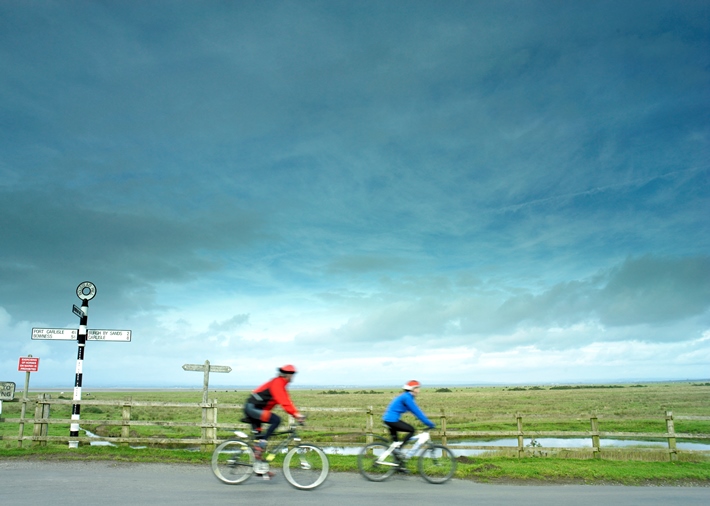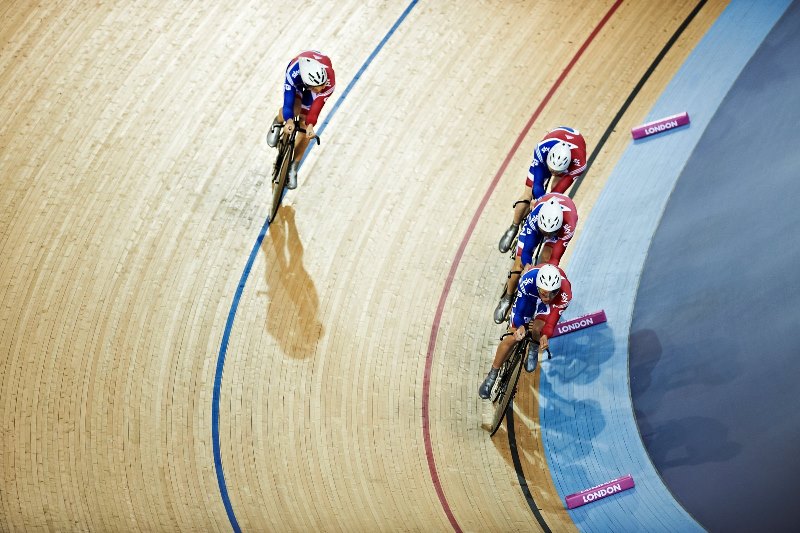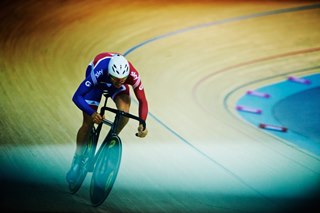- Details
- Written by: Jim
When Sir Bradley Wiggins won the Olympic time trial and took to his throne outside Hampton Court Palace in August last year, some said that British cycling had changed forever: the Olympic champion was already a household name as the first British winner of the Tour de France. And he was the man who made cycling cool.
But in truth, cycling in the UK has been undergoing a sea change for more than 20 years – Wiggins and his famous sideburns had become a national hero but his were just one pair of legs amongst many rouleurs, coaches and enthusiasts whose influence has helped to get the nation cycling for leisure, for pleasure and competitively too.
Stop at any busy road junction in the UK’s towns or cities and you’ll likely spot people using pedal power to travel around. Their speed will vary from sedate to sprint and the bike could sport a basket and a rusty chain or be worth several thousand pounds. But what’s for sure is that cycling is no longer the preserve of hardy northern types in Lycra: there are
currently 200,000 more people cycling at least once a week in the UK than a year ago, according to Sport England’s Active People survey released in December 2012. And this brings the total number of cyclists in the country to more than two million.

Back in 1998 UK cyclists were pedalling around four billion kilometres a year; skip forward to 2011 and the total mileage of cyclists in this country had increased by 20 per cent. Moreover, British Cycling, the sport’s UK governing body, has reported a doubling in its membership and a 29 per cent increase in the number of organised competitive events in the last four years.
More than 20,000 people are now regularly racing across all disciplines, with almost 3,500 competitive cycling events now taking place each year.
The UK cycling market is estimated to be worth £1.4bn and has been growing at an annual rate of five per cent over the past five years. Cycling is the sport everyone is talking about; it has never been more popular. But how and why did Britain become a country of cyclists?
Renaissance
A LARGE chunk of UK cycling’s renaissance came post-Beijing 2008, when the British track cycling team blew the world away and came home with seven gold medals, three silver and two bronze. That medal haul certainly inspired a whole lot of people to dig out their trusty steeds or invest in new ones – there were 3.7million bikes sold in the UK in 2010 and the government’s Ride To Work scheme certainly contributed to an increase in people cycling to and from work.
In London the roads were awash with cyclists (a significant number of commuters had taken to two wheels after the 7/7 terrorist attacks and never looked back), and Ken Livingstone, the then Mayor of London, announced plans for 12 cycle superhighways – continuous cycle routes into central London.
Since then, of course, we’ve had the Boris Bikes, and most recently the London mayor’s announcement of a £900million investment – including the superhighways and a Crossrail for Bikes – to bring the capital into line with the best of Europe’s cycle cities, such as Copenhagen and Amsterdam. Currently 575,000 cycle journeys a day are made in London alone. This could increase by 400 per cent if the scheme is fully realised.
Post-Beijing also, the capital’s city boys started to engage with the aesthetics of road bikes, lusting after aerodynamic frames and deep-set carbon fibre wheels. Middle-aged men swapped golf for high-end carbon bikes earning themselves the moniker MAMIL (middle aged men in Lycra). Cycling had ‘gone viral’. Everyone was at it.
Some of this was the result of increased visibility from the mainstream TV coverage of the Tour de France. ITV4’s 2012 Tour de France highlights show with its superior cinematography, catchy theme and its ‘muso’ music choices secured the channel its best-ever tour ratings since coverage began in 2005. And as Britain enjoyed more success, more people got the cycling bug. But behind the scenes British Cycling had been working hard to increase participation at every level since the mid 1990s.
Catalyst for change
UK PRO-CYCLING has had its triumphs and tragedies in the past: Tommy Simpson dying during a stage of the 1967 Tour de France is part of the sport’s mythology and the likes of Scotland’s King of the Mountains Robert Millar have kept the flag flying during leaner times.
But the professional sport was in disarray, and public interest had waned, until Chris Boardman’s Olympic gold in the individual pursuit at the 1992 summer games (our first cycling gold for 72 years) proved a badly-needed catalyst for change. Boardman’s win convinced his coach Peter Keen that Brits could compete at international level. Keen set out to transform British cycling with a vision that slowly evolved though the 1990s and 2000s: National Lottery funding, the Manchester Velodrome (built to host the 2002 Commonwealth Games) and determination all played their part. Around 2007 Dave Brailsford started to take the helm and the rest is now cycling history, and its heroes Chris Hoy, Victoria Pendleton, Mark Cavendish, Jason Kenny, Laura Trott and, of course, Wiggo are household names.
Cycling for Fun
WHAT’S EQUALLY remarkable, is how the success of pro-cycling in the UK has been mirrored by an increase in mass participation: women, families and children have all got the cycling bug. Some of this has been the result of a calculated long-term investment in cycling training and events made by British Cycling – its Go-Ride development programme, boosted by Sky’s £30million sponsorship of the sport, aims to provide a ‘fun and safe way to introduce young riders to cycle sport and provides a platform to improve bike-handling skills’. And grassroots initiatives such as the mass participation Sky Ride events and the Breeze cycling programme of female-only bike rides are doing the same for families and women.

Another highly significant event was the development of the National Cycle Network, created in the mid-1980s by the charity Sustrans (Sustainable Travel). Sustrans aimed to create 5,000 miles of sign-posted cycle routes all of which were to be, ‘suitable for an unsupervised 12-year-old’ by 2005. The goal was achieved by 2000 and in 2011 there were 13,000 miles of signposted cycle routes in the UK. This has spawned a huge interest in long-distance riding, with vast tracts of Britain’s spectacular landscape now safely open for our enjoyment.
So while Team Sky takes to the roads of France again this summer expect to see more Lycra on the move back home. And if you think that cycling peaked with 2012’s golden summer, think again. With more Brits in the Tour de France than ever before, more leisure cyclists on the road, more cycling on TV, and the two-day 20,000-riders mass participation Ride London extravaganza from 3-4 August providing a lasting Olympic legacy, there’s nowhere for the sport to go other than up.

 Cycling is the UK’s current sport of choice but what was it that got the nation’s wheels turning? Susannah Osborne has a few theories
Cycling is the UK’s current sport of choice but what was it that got the nation’s wheels turning? Susannah Osborne has a few theories

